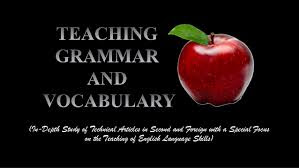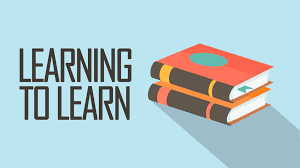Teaching Vocabulary and Grammar
" Teaching Vocabulary and Grammar"
Teaching world should be based on context and meaning,
not rote learning. Hyme (1972) the goal of language teaching is referred to as “communicate
competence”. Hyme coined this term in order to contrast a communicate view of
language and Chomsky’s theory of competence. In Hyme’s view a person who acquires
communicative competence acquires both knowledge and ability for language use.
Learning a word for productive use requires more learning
than for receptive use. Therefore, when planning, the teacher needs to prepare
activities that enrich the learning to known words and improve the access to
the words. There are several activities that suggested: role play, retelling,
ranking, same or different, kim’s game, remember the picture, the paragraphing
strategy, communicative crosswords, twenty question, describe it!, beating the
odds, split information problems, headlines, where should the prison be built,
4/3/2.
To teaching vocabulary through:
- · Deliberate teaching& learning: ( The direct teaching approach guidelines) > If the word is a high frequency word or one that will be of continuing importance for the learners> give it attention, preferably focusing on its learning burden> make sure the learner will come back to it again> If the word is a low frequency, pass over it without comment or give some brief attention to it focusing on what is needed in that instance.
- · Language
focus learning: Keep it clear and simple, rely on repeated meeting to develop
an understanding of the complexities of a word. > don’t try to deal with the
complexities by intensive teaching
- · Strategy
training: guessing from context, using cards, using word parts, using
dictionary. (It takes a few months and several minutes each week for learners
to get really good at using each strategy. A strategy is not learned in one
training session).> some ideas for teaching target vocabulary we can use
frayer model or square vocab.
- · Fluency
development: Help students become more proficient with words they already know.
Also, for fluency task should focus on meaning, have unknown vocabulary, push
Ss to go faster and have quantity of practice.
A good vocabulary must focus on useful words, preferably
high frequency words that students are 1 familiar with, also focus on a useful
aspect of the learning task. That is has a useful learning 2 goal. Gets
learners to meet or use the word in ways that establish new mental 3
connections for the word. It sets up useful conditions involving generative use
involves the learners in actively searching and evaluating the target words in4
the exercise does not bring, related unknown or partly known words together. It
avoids inference.
Effective language teaching leads students to use
their knowledge of the form of the language to develop skills for talking and
listening to each other, reading and writing to each other. Language teaching includes
both grammar and people interacting in meaningful ways. It’s a balance between
correct grammar and using language to communicate. Some kind of focus on form
is useful to some extent. For some forms, for some students at some point in
the learning process.
In grammar we can 2 different things such as forms and
language function. Forms of a language deal with the internal grammatical
structure of words. Meanwhile language function refers to the purpose for which
speech or writing is being used.
Language functions:
- · Accepting
an invitation
- · Interrupting
politely
- · Acknowledge
someone’s interest
- · Keeping
someone from interrupting agreeing
- · Making
an excuse
- · Declining
an offer
- · Disagreeing
- · Offering
advice
- · Requesting
- · Greeting
- · Suggesting an alternative
- Ø Are
these same?
- Ø Can
you play the piano?
- Ø Can
you run fast?
- Ø Can
you speak French?
- Ø Can
you pass the salt?
Same function, different form
- Ø Why
don’t we watch a film?
- Ø Let’s
watch a film
- Ø Shall
we watch the film?
- Ø We
could watch a film
- ü Modelled
language
- ü Controlled
practice
- ü New
uses of the focus vocabulary and structure
Richards, Jack C. (2009). Approaches and Methods in Language Teaching. 2nded Cambridge: Cambridge University Press.






Ulasan
Catat Ulasan